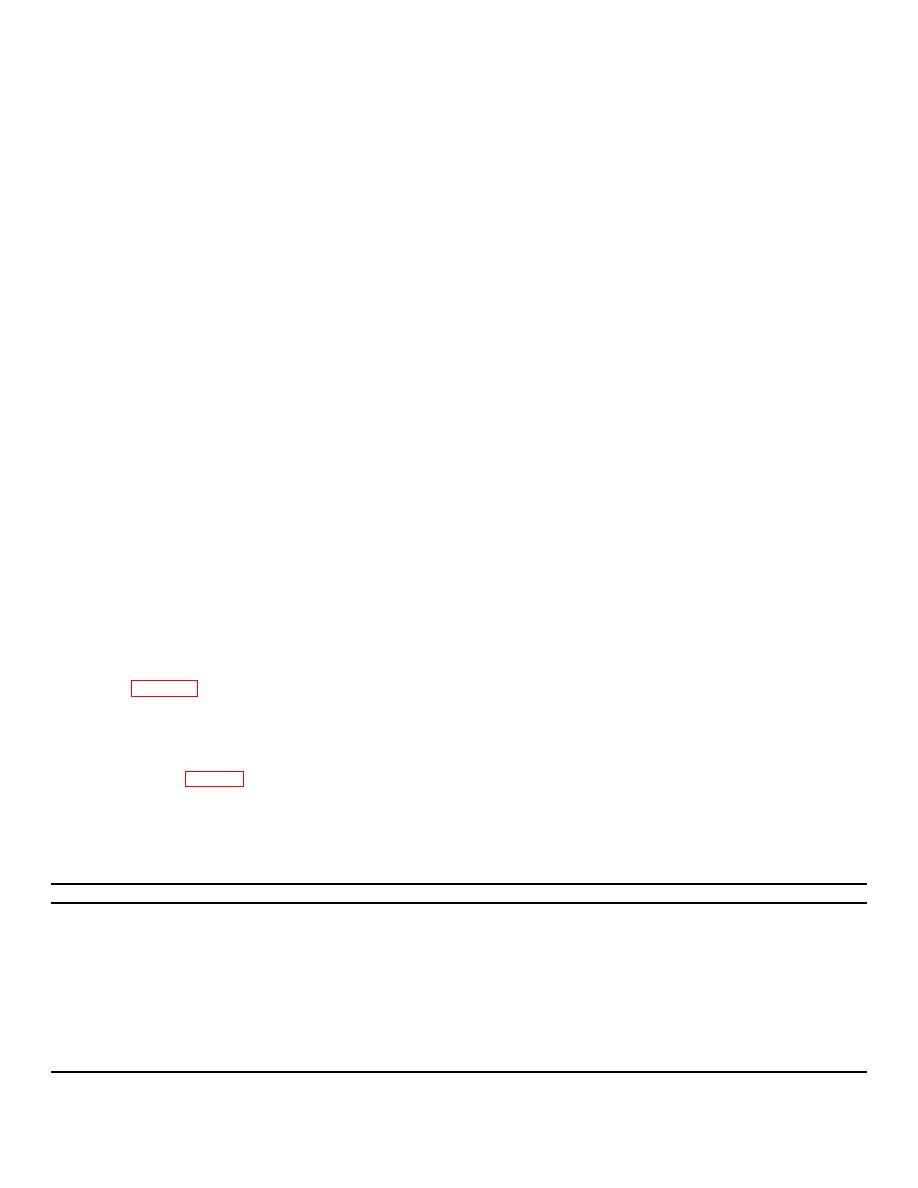
TM 5-3895-359-14&P
As the piston continues on the upward stroke, the
Each engine is equipped with an oil cooler, lubricating
exhaust valves close and the charge of fresh air is
oil filter, fuel oil strainer, fuel oil filter, air cleaner,
subjected to compression (compression).
governor, fan and radiator, and starting motor.
Shortly before the piston reaches its highest position,
Full pressure lubrication is supplied to all main,
the required amount of fuel is sprayed into the
connecting rod and camshaft bearings, and to other
combustion chamber by the unit fuel injector (power).
moving parts within the engine. A gear type pump
The intense heat generated during the high compression
draws oil from the oil pan through an intake screen,
of the air ignites the fine fuel spray immediately. The
through the oil filter and then to the oil cooler. From the
combustion continues until the fuel injected has been
oil cooler, the oil enters a longitudinal oil gallery in the
burned.
cylinder block where the supply divides; a portion
entering the by-pass filter. if used, and then draining
The resulting pressure forces the piston downward on its
back into the oil pan, part going to the cam and balance
power stroke. The exhaust valves are again opened
shaft end bearings and cylinder head, with the
when the piston is about halfway down, allowing the
remainder going to the main bearings and connecting
burned gases to escape into the exhaust manifold
rod bearings via the drilled crankshaft.
(exhaust).
Coolant is circulated through the engine by a centrifugal-
Shortly thereafter, the downward moving piston
type water pump. Heat is removed from the coolant,
uncovers the inlet ports and the cylinder is again swept
which circulates in a closed system, by the heat
with clean scavenging air. This entire combustion cycle
exchanger or radiator.
Control of the engine
is completed in each cylinder for each revolution of the
temperature is accomplished by a thermostat which
crankshaft, or, in other words, in two strokes; hence, it is
regulates the flow of the coolant within the cooling
a "two-stroke cycle".
system.
The two-cycle engines covered in this manual are
Fuel is drawn from the supply tank through a strainer by
produced in three, four and six-cylinder models having
a gear-type fuel pump. It is then forced through a filter
the same bore and stroke and many of the major
and into the fuel inlet gallery in the cylinder head and to
working parts such as injectors, pistons, connecting
the injectors. Excess fuel is returned to the supply tank
rods, cylinder liners and other parts that are
through the fuel outlet gallery and connecting lines.
interchangeable.
Since the fuel is constantly circulating through the
injectors, it serves to cool the injectors and also carries
The blower, water pump, governor and fuel pump form a
off any air in the fuel system.
group of standard accessories which can be located on
either side of the engine, regardless of the direction of
Air for scavenging and combustion is supplied by a
rotation.
Further flexibility in meeting installation
blower which pumps air into the engine cylinders via the
requirements can be had by placing the exhaust
air box and cylinder liner ports. All air entering the
manifold and the water outlet manifold on either side of
blower first passes through an air cleaner or silencer.
the engine (Fig. 1-4). This flexibility in the arrangement
of parts is obtained by having both the cylinder block
Engine starting is provided by an electric starting
and the cylinder head symmetrical at both ends and with
system.
respect to each other.
The electric starting motor is energized by a storage
The meaning of each digit in the model numbering
battery. A battery-charging alternator, with a suitable
system is shown in Fig. 1-4. The letter L or R indicates
voltage regulator, serves to keep the battery charged.
left or right-hand engine rotation as viewed from the
front of the engine. The letter A, B, C or D designates
Engine speed is regulated by a mechanical type engine
the blower and exhaust manifold location as viewed
governor.
from the rear of the engine.
GENERAL SPECIFICATIONS
4-71
Type
2 Cycle
Number of Cylinders
4
Bore (inches)
4.25
Bore (mm)
108
Stroke (inches)
5
Stroke (mm)
127
Compression Ratio (Nominal) ("N" Engines)
18.7 to 1
Total Displacement - cubic inches
284
Total Displacement litres
4.66
Firing Order - R.H. Rotation
1-3-4-2
Number of Main Bearings
5
4

